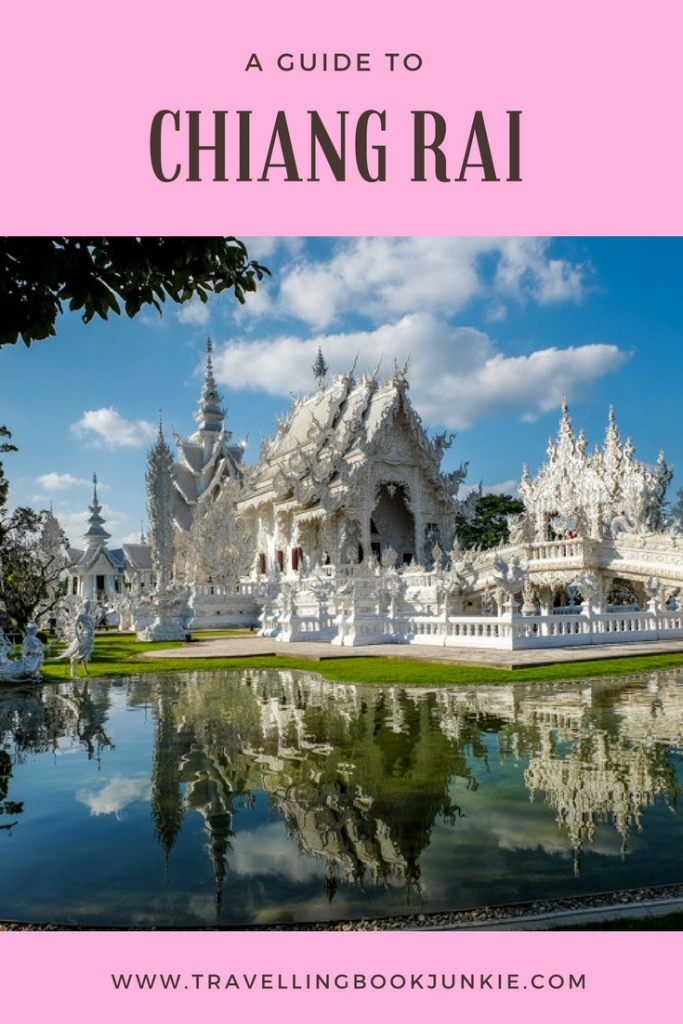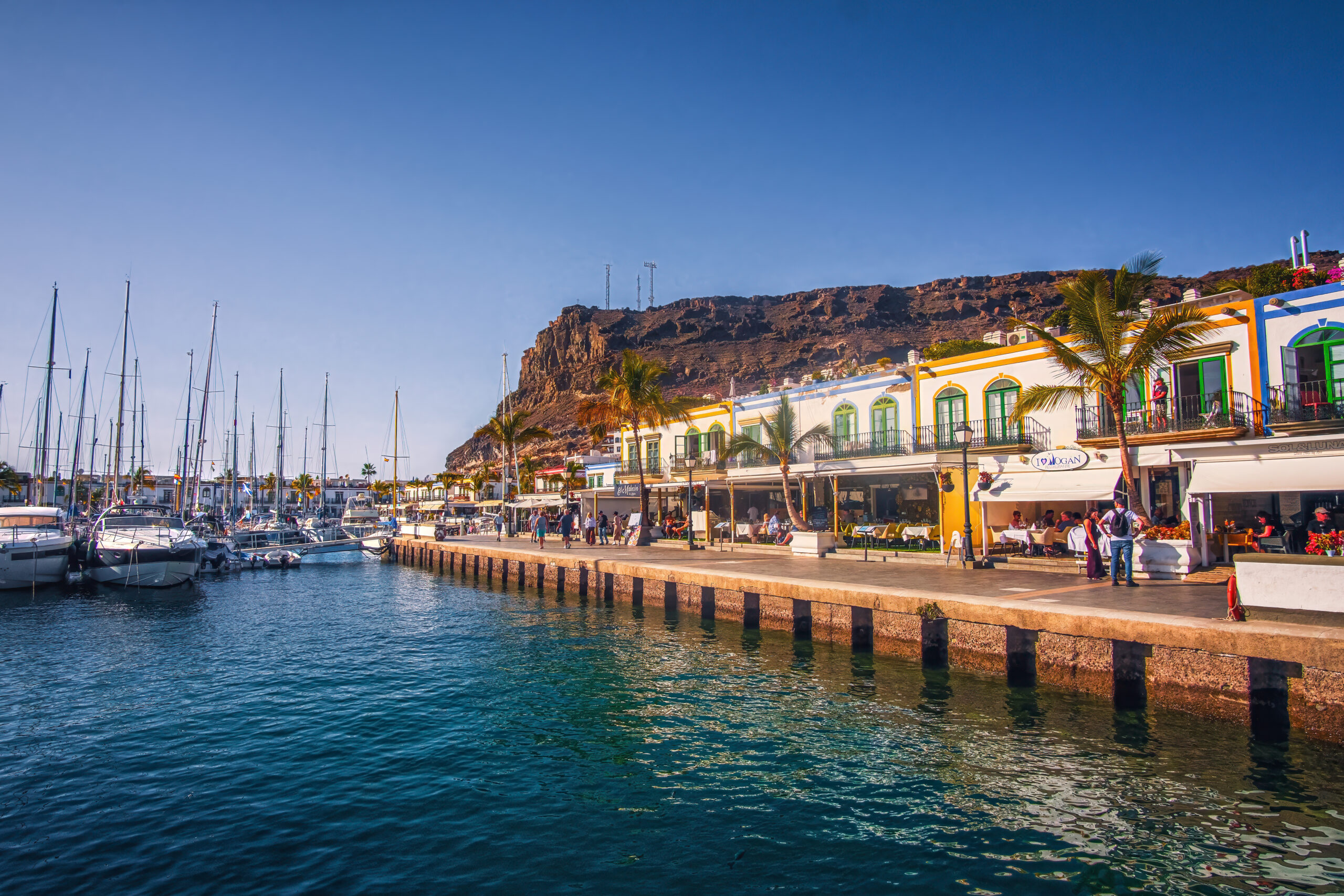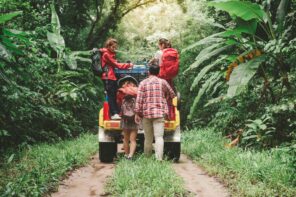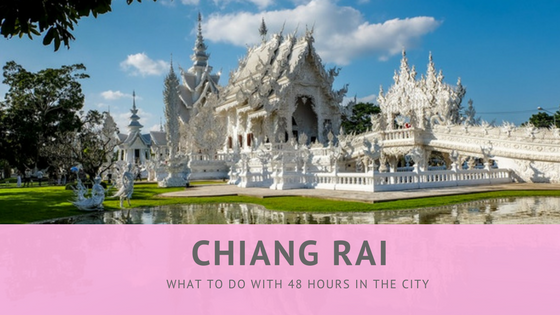
Chiang Rai has become exceedingly popular in recent years for one reason in particular. If you were to do a search on the internet right now, looking up ‘most visited temples I guarantee that Wat Rong Khun (also known as the White Temple) will appear within the top five, rating higher than even Wat Pho in Bangkok with its giant reclining Buddha.
When we, therefore, decided to head to Thailand, it is unsurprising that we too want to visit this famous site. However, the more I delved into the region the more I discovered. Whilst, of course, any visit to Chiang Rai leads you to the shining white beacon, it would seem that there is much more to see in this mountainous province that is close to the borders of both Laos and Myanmar (formerly Burma).
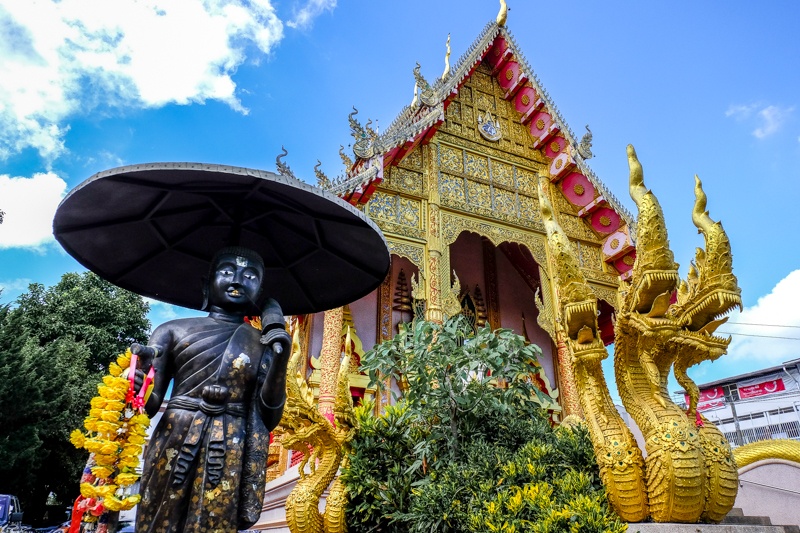
One of the many beautiful temples in Chiang Rai
Lonely Planet was correct when they say that ‘Chiang Rai Province has such a diversity of attractions that its capital is often overlooked. This small, delightful city is worth getting to know…’
The diversification of this Northern Province makes it difficult to concentrate on the capital city itself. Within a short time of researching what to go and where to head in the area, I had a list as long as my arm with only two days to potentially complete it in. From Chiang Rai, you can visit some of the best tea plantations in the country, spend time with Hill Tribe Villages, tour the infamous Golden Triangle, relax around waterfalls or hike up the surrounding mountains in the nearby National Parks so it really isn’t that surprising to find out that there are very few tourists that linger for too long in the city itself. That doesn’t mean it’s not worth-while of course, it just means that if you are one of the few opting to explore Chiang Rai in all its glory, chances are you will visit places that others easily overlook.
What to See and Do in Chiang Rai
#1 Where to Eat
Being honest, and partly because of the comments made to us on check-in, we actually ignored the night market on the first evening and headed out to of all things, a fantastic Indian restaurant on the Jedyod Road called Accha Fusion. Other than that, Chiang Rai seems to be trying to accommodate ex-pats and tourists with a mix of American diners, English breakfasts, and several pizza takeaways.
If the internet is something you crave whilst in the city, head to one of the numerous coffee shops many of which have now become an office for those ex-pats working digitally. On our first morning in the city, we popped into Destiny Cafe and Restaurant for breakfast and coffee only to find several people already there, plugged in for a day of meetings and work. As a side note, the coffee here is amazing, so even if you don’t fancy a WiFi fix, after exploring the undercover market and the local temples this is a great stop off in the heart of the old city.
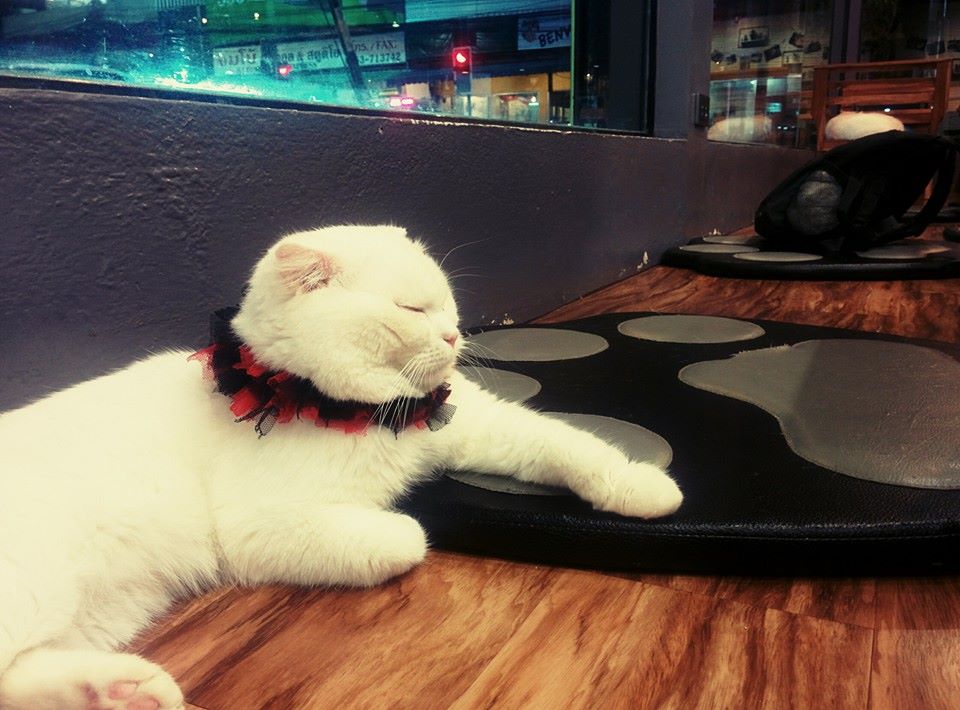
The Cat Cafe in Chiang Rai
On the second evening, after exploring the local cat cafe, clearly the latest craze but still one I am unsure on personally, we ventured off into the night market, which from the main road looks like just one long street with not a lot going on. Do not be fooled. Head around the corner, past a very fancy-looking outside restaurant and you will stumble upon one of the biggest outside eateries we came across whilst in Thailand. With both local and international dishes on offer, every taste bud is catered for. It is far more than a food stop-off though. Long tables spread across the space in-between each of the stalls, allowing for people to sit, enjoy their food and mix with others, making it one of the most sociable places in Chiang Rai to hang out.

Would you visit a Cat Cafe?
#2 What to See
If you want to stay within the city limits, don’t fret there is still plenty to see, although you will perhaps need to navigate the local bus system, ride in a tuk-tuk or hire a scooter in order to see the very best that Chiang Rai has to offer.
At the top of the list, quite rightly, and perhaps the main reason why so many people visit Chiang Rai each year, is the wonderful Wat Rong Khun.
Wat Rong Khun (The White Temple)

The White Temple of Chiang Rai
Whenever you do a search for temples in Thailand, I guarantee that the white temple will appear, making it one of the most recognisable places to visit in the whole of the country.
Different from many other temples in Thailand, this is not so much a place of worship but a contemporary work of art. Designed and constructed by Chalermchai Kositpipat it was opened to the public in 1997, Wat Rong Khun is perhaps the most unconventional temple we have ever visited.

Reflected on a glistening body of water the White Temple is a myriad of symbolism. The bridge leading up to the main building, for example, symbolises the cycle of rebirth, human suffering, and greed with hundreds of hands reaching out of the ground as if our souls are desperately trying to grab onto something. You then pass through the Gates of Heaven, where you will wander past huge statues that denote both Death and Rahu (the decider of the fate of man) before we can drift into the space of meditation where you will find several Buddha images.
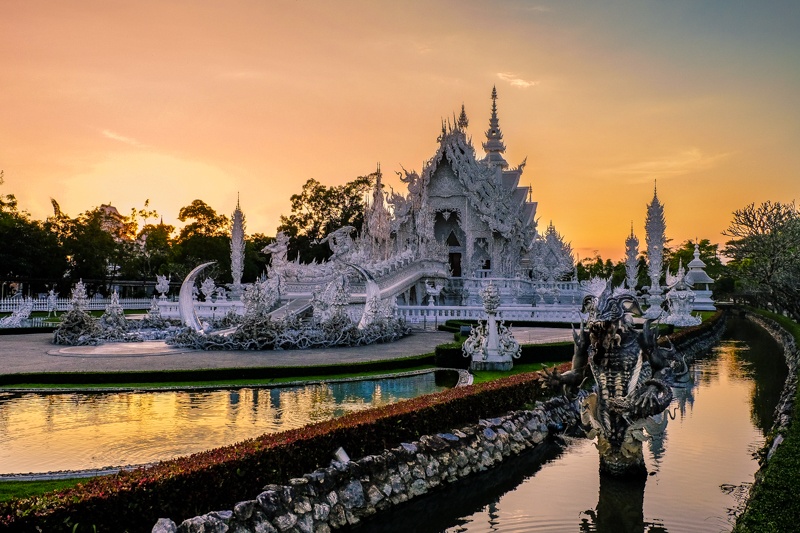
Make sure you visit the golden building whilst there which not only symbolises how, as humans, we tend to focus on materialistic things and possessions, it is also home to the grandest toilets I have ever seen.

The White Temple also had some quirky extras
Baandam Museum (The Black House)

Less well known than Wat Rong Khun, Baanndam Museum (aka The Black House) displays the artwork of another well-known creative, Thawan Duchanee, a contemporary painter, architect, and sculptor. Unlike the White Temple though, the Black House has a very macabre feel to it. Wandering around you will notice the use of many animal bones and skins meaning many people refuse to visit the one time home of the artist because they believe that it is an insult to Buddhism.
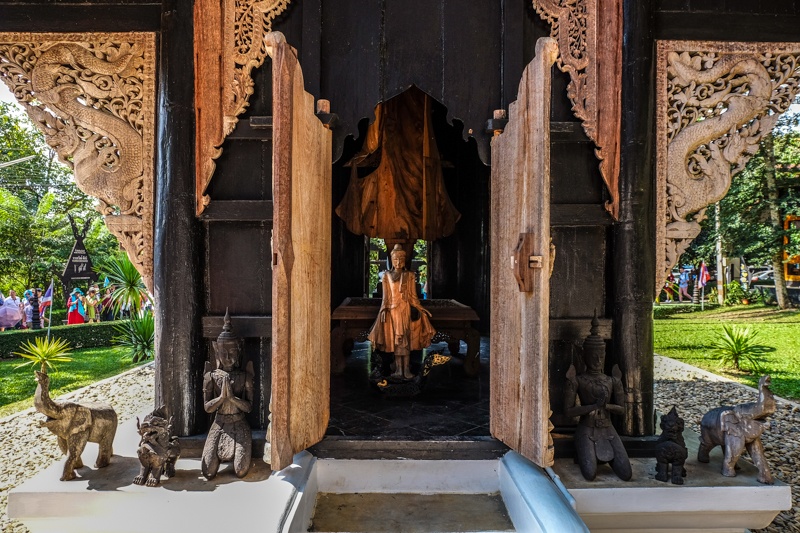
Everything about this site is dark, with each of its 15 beautifully crafted houses, also built of dark wood, being embellished with skins, bones, teeth, and taxidermy.
If however, you can get past the entire elephant skeleton, the snakeskin table runners and the thousands of animal remains the workmanship and detail that has gone into creating possibly the strangest collection of artwork ever has to be commended.
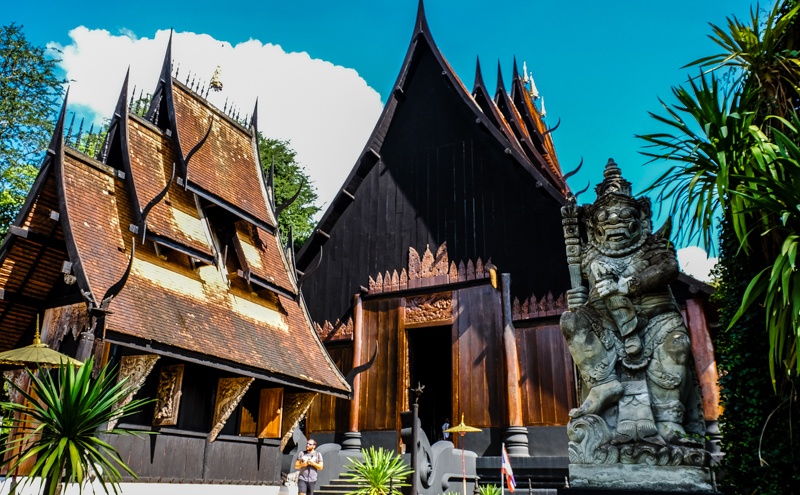
We understand that this is not a museum everyone will wish to visit, but for those that do, it is both a fascinating yet shocking attack on the senses.
Wat Huay Pla Kung Temple (The 9-Tiered Chinese Temple)
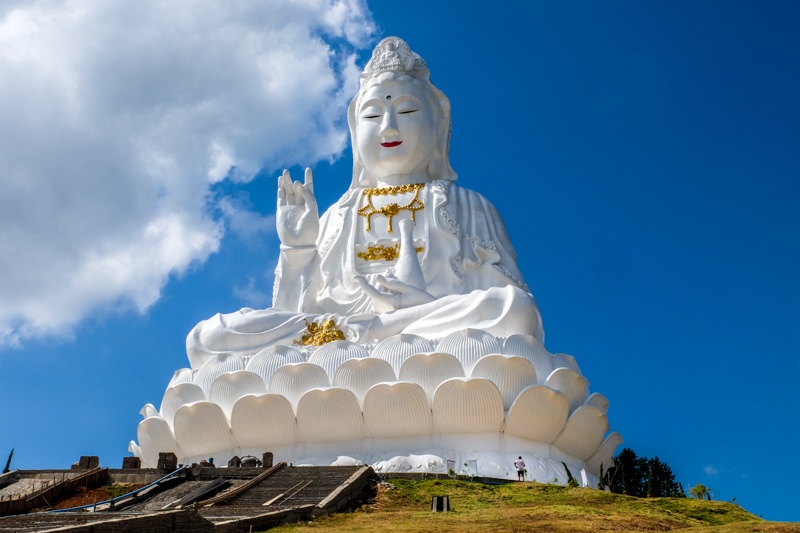
Located just 6km North East of Chiang Rai itself and within the Golden Triangle limits, Wat Huay Pla Kung is easily seen from a distance with its extraordinary stunning white, skyscraper of a statue.
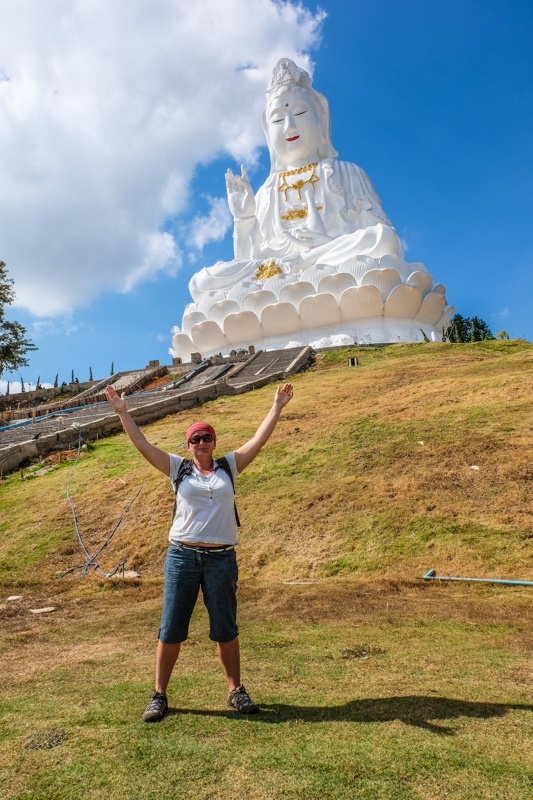
Often mistaken as a giant Buddha, the first thing you will see when heading towards this particular temple is the giant statue of a female Bodhisattva, Guanyin; a Chinese goddess of mercy and compassion. Away from the tourist track, heading up here means that not only will you gain some amazing views from both the top of the 9-tier Pagoda as well as from the dizzy heights of the Bodhisattva’s third eye; you will be able to do it in relative peace.
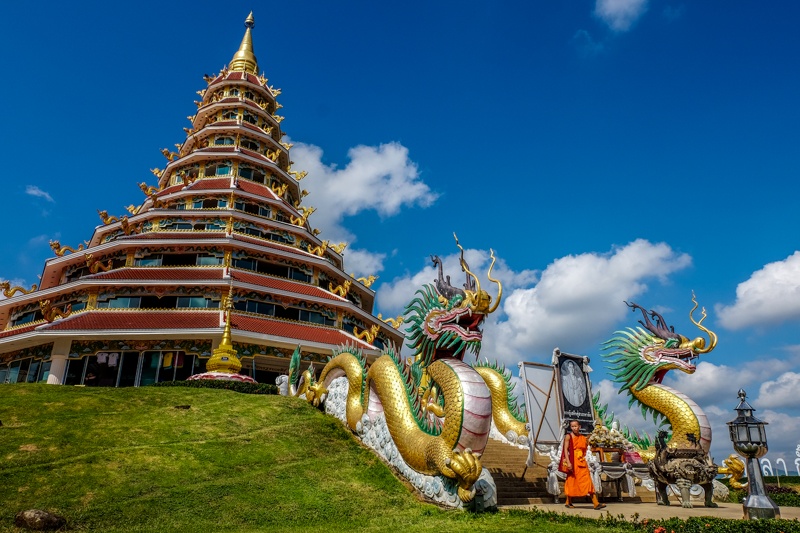
Wat Phra Kaew (Temple of the Emerald Buddha)
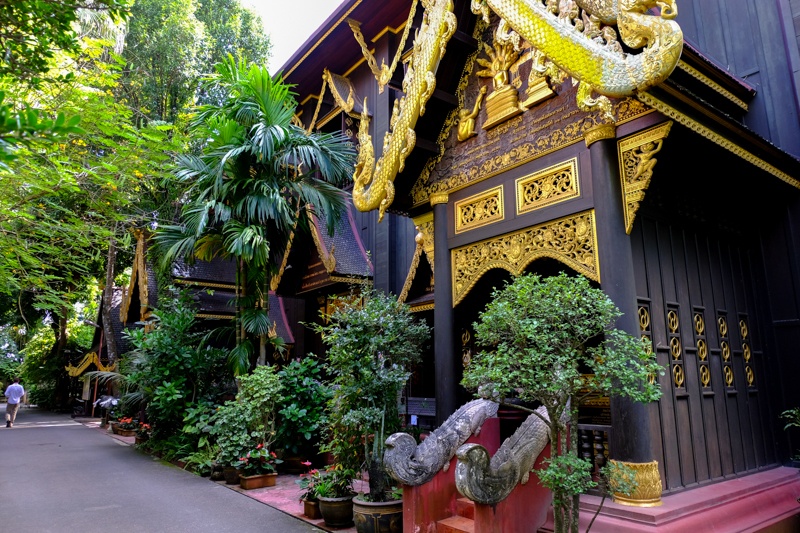
While many of us now know that the Emerald Buddha can be found in the Grand Palace in Bangkok, very few people are aware that it was discovered in Chiang Rai.
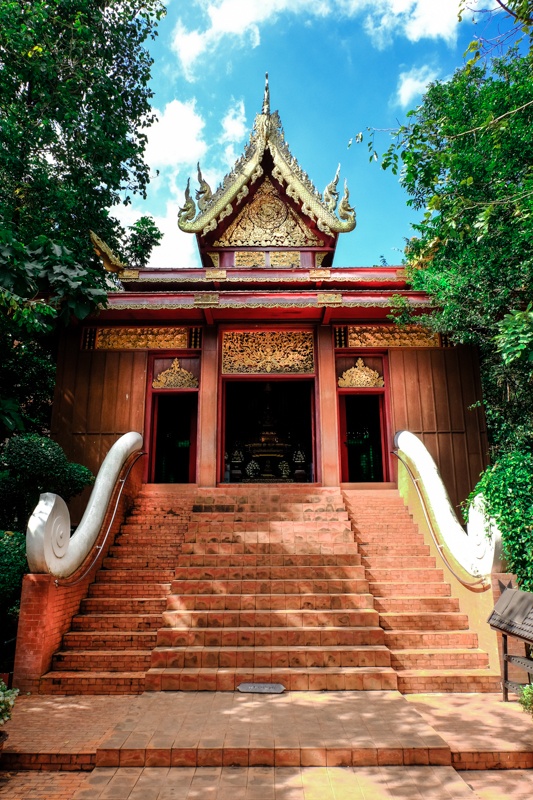
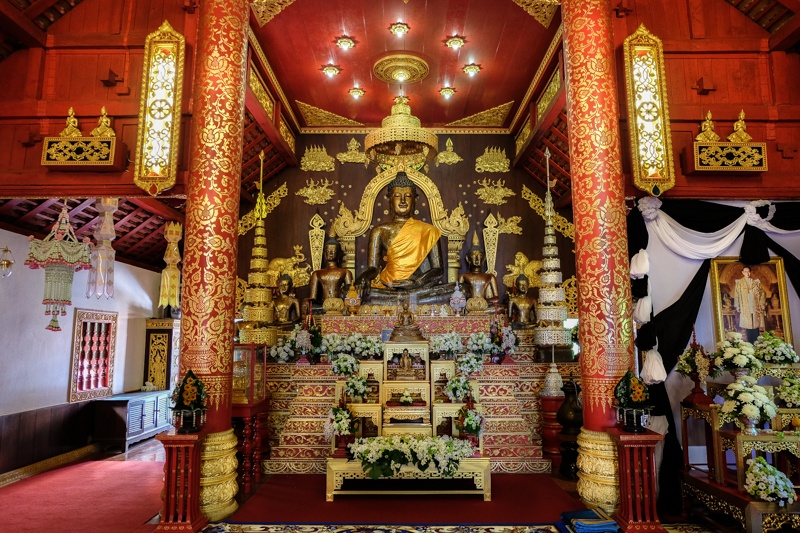
So legend says, back in 1434 when lightning struck the chedi, the Emerald Buddha was unearthed inside the Royal Temple (Wat Phra Kaew), hence why it is now one of the most revered temples in all of Chiang Rai. Today, a replica sits in its place, and at only 45cm tall, you need to look hard if not you would easily overlook it.
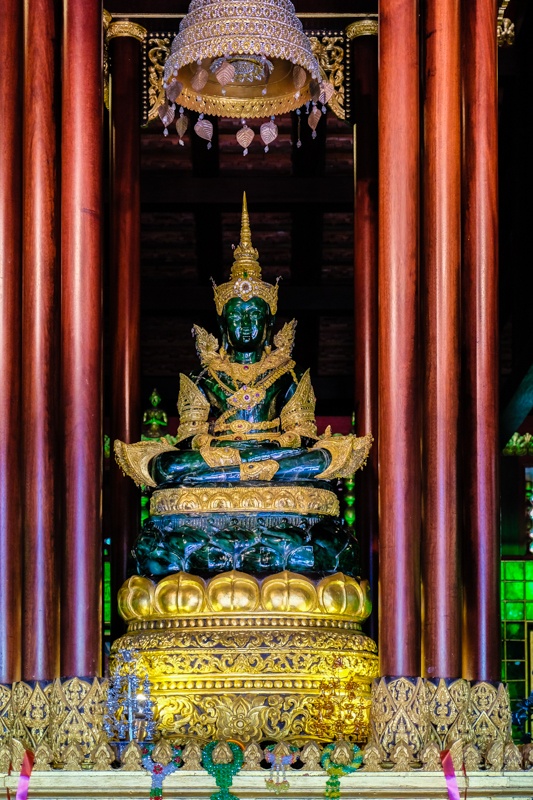
Wat Phra Kaew temple is visually striking, designed in the typical Lanna style popular to the region and surrounded by beautiful yellow bamboo trees it stands out due to the stunning red facade with intrinsic golden patterns.
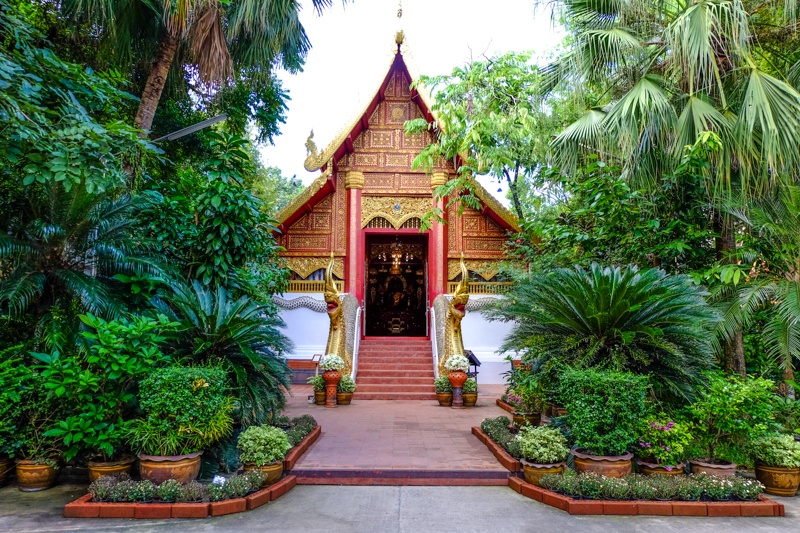

Some of the collections inside Wat Phra Kaew
Should you get time there is also Wat Rong Seua Ten (The Blue Temple), Singh Park with its tea plantation, orchards, trails, tram, and a petting zoo and the Pong Phra Bat Hot Springs that you could visit.
#3 Where to Stay

The Breakfast Area of Happynest
With many people only visiting for the day, we found accommodation really difficult to find. I am not saying there isn’t accommodation available, but depending on your travel style you may struggle. In fact, Chiang Rai was the very first time we have stayed in a hostel as a couple and I have to say I was pleasantly surprised.
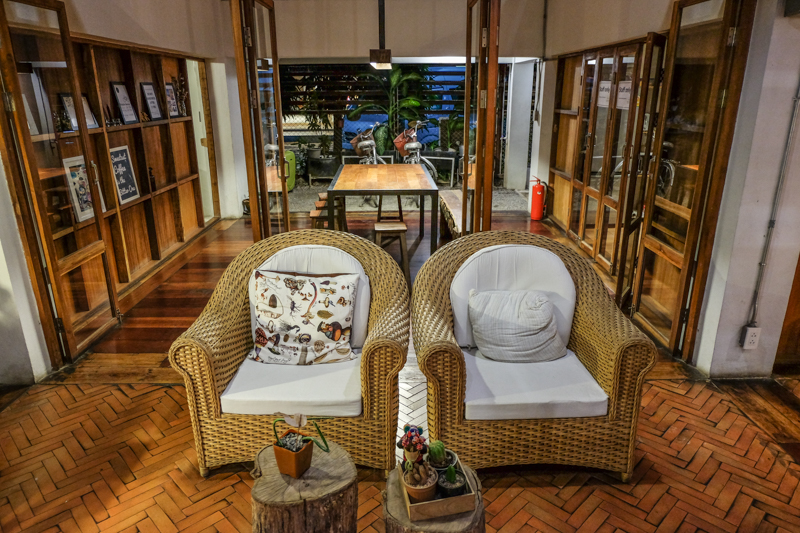
Inside Happynest hostel
Of course, as with anything, we did research and chose the Happynest hostel because of its fantastic reviews and decor. I also liked the fact that we were supporting local lads who created the Happynest concept after they left school.
If you are looking for a relaxing few days somewhere extremely cheap, then I wholeheartedly recommend stopping off here. Unlike many other towns and cities, Chiang Rai has remained a small, sleepy province that offers you a chance to slow down, recharge your batteries and see what some of the more popular northern destinations like Chiang Mai would have been like some years ago.
Have you visited Chiang Rai? What activities would you recommend to others?
Did you enjoy this article? Then PIN it for later…
